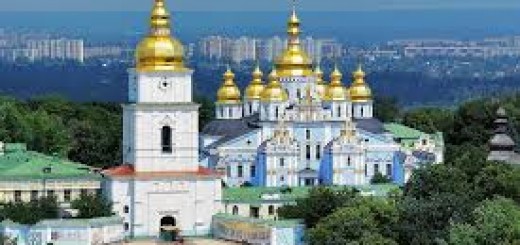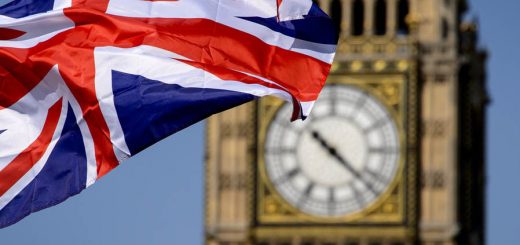Ukraine
Teaching Objectives:
to develop speaking skills of the pupils;
to motivate learners to communicate discussing the topic;
to improve student’s listening and comprehension skills;
to stimulate children’s interest to the subjects of discussion.
Materials required:
1) Textbook “English” 8-th form. A.Nesvit;
2) “A Round table” made of desks;
3) a blackboard with working material “A Poem by V. Sosyura”, “A Poem for warming up”;
4) pictures and photos.
Procedure:
- Introductory activity (10 min.)
Teacher: How do you do, children!
Pupils: How do you do!
Teacher: I hope you are well!
Pupils: We hope you are too!
Teacher: We have learned much about Ukraine and I want you to speak about our Motherland. Let’s look at the blackboard and try to memorize such fine words about Ukraine.
Warming up
“We live in Ukraine – a beautiful land. It’s home for me and you, my friend.
Its towns and villages are so nice. Ukrainian people are wise!”
- Listening. Speaking (30min.)
Teacher: Dear friends, try to forget that we are at the lesson. We are going to have a friendly talk about Ukraine-our Motherland, its cities and towns, its people and climate. So, we are looking at the map. We have talked a lot about our state at our lessons, and today I want you to exchange your impressions of your visits to Kyiv and Vyshhorod or to some other interesting places. Those pupils who haven’t been to the capital will perhaps ask their friends questions about their trips and learn something interesting. Let’s start our talk. Who would like to speak?
Pupil 1: As we know Ukraine is about 603,700 thousand square kilometers. The country is situated in the centre of Europe. The geographical position of Ukraine is ideal for the development of its economy due to the natural resources. We know that Ukraine is washed by the Black Sea and the Sea of Azov. The main ports are Odesa, Kherson, Mykolayiv and Sebastopol.
Ukraine has over 131 rivers. The largest are: the Dnipro, the Dniester, the Danube, the Southern Buh, the Siversky Donets and the Tysa.
Teacher: Oh, I see you know much about Ukraine. May be somebody wants to help you?
Pupil 2: Yes, of course, I do.
I like nature and have read much about mountains and peaks. We know that Carpathian Mountains are young and they are in the west of Ukraine. It’s my dream to go there on my summer holidays and to go up Hoverla – the highest peak that is 2.061 m. high.
Pupil 1: Oh, I should like to go there too and see Carpathian polonynas in summer.
Pupil 3: What about the Crimean Mountains with the highest peak Roman-Kosh (1.545 m.) in the south of Ukraine.
Pupil 2: I’d like to go there too. But my dream is the Black Sea and hot sunny weather. I do hope that my dreams will come true this summer.
Teacher: Thanks a lot for your interesting discussion but all the rest are sitting and listening to. Let’s ask the other pupils to speak about other interesting places. What about seven wonders of Ukraine?
Pupil 4: I know them all:
1). Kamyanets-Podilsky and its famous fortress;
2). Kyiv-Pechersk Lavra, Kyiv;
3). Sofiyivka, Uman, Cherkasy Region;
4). St.Sophia’s Cathedral, Kyiv;
5). Chersonesus, Sebastopol;
6). Khotyn fortress;
7). Khortytsia Island. Zaporizhzhia – the biggest island on the Dnipro River.
Teacher: Oh, thank you very much. You have a good memory. What do you want to speak about? Which of the Seven Wonders do you like best?
P5; P6; P7; P8; P9; P10; P11 Pupils speak about the wonders. They have taken the material on p. 141 from the textbook, 8-th form English, A. Nesvit. Some of them have demonstrated the pictures.
Teacher: Well done! You worked hard. What about the map? Let’s find Kyiv Sea and Vyshhorod on the bank. May be somebody wants to tell us some interesting facts about our district town?
Pupil 3: Vyshhorod as a princely city was firstly mentioned in 946 in “Story of Time Years”. Its history is closely associated with the names of the prominent Old Russian rulers: princess Olha, princes Volodymyr the Great, Yaroslav the Wise, Volodymyr Monomakh. In Vyshhorod the first Slavonic holy orthodox – Borys and Hlib were buried.
Pupil 4: I want to add that Taras Shevchenko’s creative work is also connected with Vyshhorod area. Nowadays it is the powerful industrial center of Ukraine and we know that 50 establishments of health protection operate in the district nowadays.
Pupil 5: While preparing for the discussion I’ve learned that there are 30 schools in Vyshhorod district and 946 teachers work there.
Pupil 6: Oh, it very interesting to add that on the 1-st of June 2008 the district was celebrating its 35-th anniversary of its creation. I visited this fest and each resident of Vyshhorod district fell proud of living there.
Pupil 1: I have often been to Vyshhorod not only during celebrations. I made many photos. They were published in a bucklet “Vyshhorod-35”. (The pupils are looking through the pictures and photographs and commenting them).
Teacher: Oh, children, I see that it’s very interesting for you to see the given pictures. But I should say that a quest has just come to us. Her name is Nancy Johnson. She is from Great Britain. She is going to stay in Ukraine for two weeks. What do you think Nancy should see in Kyiv?
Pupil 1: I think you should go to Maidan and go along Kreshchatyk street.
Nancy: I read about Kyiv and Kreshchatyk.
Pupil 2: And then you can go on an excursion around the city and after that you should visit the Museum of Ukrainian Art.
Nancy: I like to paint and art is my hobby.
Pupil 3: I think you should go to the zoo and to the circus.
Nancy: Oh, I like nature and animals. I’ll follow your advice.
Teacher: Well, you have given Nancy a lot of advices. Will you have enough time to visit all these places in Kyiv?
Nancy: Well, I’ll try to visit as many places as I can. Thank you for your advice. I think I’ll have a nice time in Kyiv.
Teacher: Thank you for coming. We wish you a nice trip.
Nancy: I invite you to take part in the excursion around Kyiv and want you to be my guides.
Pupils: Thank you very much. We’ll prepare ourselves for our excursion.
Teacher: Let’s finish our discussion with a very fine poem written by Volodymyr Sosyura. He was a great Ukrainian poet.
Love Ukraine as you would love the sun,
The wind, the grass and the streams together…
Love her in happy hours, when joys are won,
And love her in time of stormy weather.
- Setting Home Assignment (5min)
- Reread the poem and say what it means to you to love the Motherland.
- Read the magazine article and say what the main characteristics of the Ukrainian people are (p. 147, textbook “People in Ukraine”).
- Marks and other comments.
Teacher: Thank you very much for your work. You have done much. Everybody tried to do his best. See you later. I hope that you will be well prepared for the next lesson as well. Good-bye!



